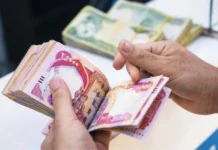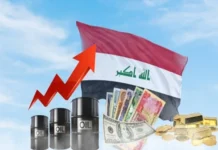Good Morning ,
Fed Cuts Interest Rates by a Quarter Point, Tees Up Two More Cuts in 2025
The Federal Reserve shifts to rate cuts, signaling concern for jobs over inflation — and the global implications are bigger than just politics.
A Policy Shift at the Fed
In a widely expected decision, the Federal Reserve lowered interest rates by a quarter point. Chair Jerome Powell emphasized that weakening labor markets now outweigh inflation risks, signaling a turn in strategy. This sets up two additional cuts later in 2025, putting the U.S. on a clear easing path.
While the move was modest, it represents a broader pivot. The Fed is openly prioritizing employment stability even as the economy grows modestly and trade uncertainties mount under Trump’s tariff push. Markets responded positively, with the Dow surging 400 points.
Trump’s Influence and Fed Independence
President Trump has been vocal in demanding more aggressive cuts and has already positioned his allies within the Fed. His efforts to reshape the institution raise questions about central bank independence. With further cuts on the table, Trump’s hand in monetary policy is increasingly evident.
Economic Outlook
The Fed projects GDP growth at 1.6% for 2025, rising slightly through 2027. Unemployment is forecast to edge up to 4.5% before stabilizing, while inflation is expected to gradually ease toward the 2% target. Consumers may see relief in borrowing costs, but savers will feel the squeeze as returns on deposits and money markets decline.
Why It’s More Than Politics
The Fed’s pivot is not just about domestic economic management — it shows how U.S. monetary policy is now entangled with Trump’s broader trade and tariff agenda. Cutting rates while tariffs disrupt global supply chains reflects a deeper struggle: keeping the U.S. dollar strong and competitive in a shifting international order.
Proof of Global Finance Restructuring
Central bank rate cuts signal to the world that the U.S. is willing to stimulate growth at the expense of traditional inflation discipline. This reshaping of priorities ties into the global reset narrative — where economic stability is increasingly pursued through coordinated monetary adjustments rather than old inflation-first doctrines. The Fed’s move could accelerate demand for alternative systems, including digital assets and gold-backed reserves.
Implications for De-Dollarization & Global Reset
- Lower U.S. rates make dollar assets less attractive globally, pushing investors toward gold, commodities, and even BRICS-led settlement currencies.
- Trump’s pressure on the Fed underscores political risk in U.S. monetary policy — a concern for countries already seeking alternatives to dollar hegemony.
- The easing cycle may align with broader international moves toward asset-backed financial systems, giving momentum to calls for a reset in global reserve structures.
Why This Matters
The Fed’s cuts are a domestic economic response — but they ripple outward. Every shift in U.S. monetary policy recalibrates global capital flows, currency strength, and the ongoing search for alternatives to the dollar. What looks like a small cut is part of a much larger transition.
This is not just politics — it’s global finance restructuring before our eyes.
@ Newshounds News™ Exclusive
Source: U.S. News & World Report
~~~~~~~~~
SEC Opens Floodgates for Crypto ETFs With Grayscale Approval
The SEC’s approval of Grayscale’s multi-crypto fund and new listing standards clears the way for a wave of digital asset ETFs on Wall Street.
Grayscale’s First-of-Its-Kind Fund
The U.S. Securities and Exchange Commission (SEC) has approved Grayscale’s Digital Large Cap Fund (GDLC) to trade as the first multi-crypto exchange-traded product (ETP). The fund offers exposure to five major cryptocurrencies: Bitcoin, Ether, XRP, Solana, and Cardano.
Grayscale CEO Peter Mintzberg hailed the approval as a landmark, thanking the SEC’s Crypto Task Force for “bringing the regulatory clarity our industry deserves.” The fund, valued at $57.7 per share with over $915 million under management, had previously traded over-the-counter before its conversion to an ETP on NYSE Arca.
Generic Standards: A Fast Track for Crypto ETFs
Alongside Grayscale’s win, the SEC approved generic listing standards for crypto ETFs — a move expected to accelerate dozens of applications. Under the new rules, exchanges such as Nasdaq, NYSE Arca, and Cboe BZX can list certain crypto ETFs without lengthy, case-by-case reviews.
SEC Chair Paul Atkins framed the decision as market modernization:
“By approving these generic listing standards, we are ensuring that our capital markets remain the best place in the world to engage in the cutting-edge innovation of digital assets.”
The streamlined process could unleash a wave of new crypto funds, with Bloomberg ETF analysts predicting more than 100 launches within the next year. Eligible assets include XRP, Solana, Dogecoin, Litecoin, and others with sufficient market and surveillance structures.
Balancing Opportunity and Risk
Not all commissioners were fully supportive. SEC Commissioner Caroline Crenshaw warned that looser standards could flood markets with products lacking rigorous vetting:
“The Commission is passing the buck on reviewing these proposals … in favor of fast tracking these new and arguably unproven products to market.”
Still, the broader response has been bullish, with analysts and fund managers viewing the shift as a watershed moment for institutional adoption of crypto assets.
Why It’s More Than Politics
This decision reflects more than regulatory housekeeping. By fast-tracking crypto ETFs, the SEC is legitimizing digital assets inside U.S. capital markets, linking America’s financial future to blockchain adoption. Politics may shape the rhetoric, but the real story is regulatory alignment with innovation to keep Wall Street globally competitive.
Proof of Global Finance Restructuring
The SEC’s shift shows how digital assets are becoming integrated into mainstream financial products. Crypto ETFs, once delayed and contested, are now moving into mass-market availability. This marks a restructuring of global finance: investment flows that once went into stocks and bonds are now being systematically rerouted into tokenized assets.
Implications for De-Dollarization & Global Reset
- The institutionalization of crypto ETFs may accelerate global diversification away from dollar-only reserves.
- With XRP, Solana, and other altcoins in approved funds, the U.S. is acknowledging assets that BRICS nations already see as alternatives to the dollar.
- Generic standards could be the infrastructure blueprint for tokenized commodities and CBDCs — tools that could reshape reserve systems in a global financial reset.
Why This Matters
The SEC’s dual approval of Grayscale’s multi-crypto fund and new listing standards may prove a watershed in U.S. financial history. The regulator is signaling openness to a crypto-integrated market structure — one that could both strengthen Wall Street’s dominance and simultaneously speed up global shifts away from a purely dollar-centered system.
This is not just politics — it’s global finance restructuring before our eyes.
@ Newshounds News™ Exclusive
Sources: The Block, Cointelegraph
~~~~~~~~~
Ripple at the Core: DBS and Franklin Templeton Launch Tokenized Lending on XRP Ledger
The partnership places Ripple’s XRP Ledger at the center of a new tokenized ecosystem for global institutions.
Partnership for Tokenized Finance
DBS, Franklin Templeton, and Ripple have signed a memorandum of understanding (MOU) to roll out tokenized trading and lending services for institutional investors. The system, built on the XRP Ledger, is designed to help investors navigate volatile markets by enabling seamless movement between stablecoins and yield-bearing funds.
DBS Digital Exchange (DDEx) will list sgBENJI, a tokenized version of Franklin Templeton’s U.S. Dollar Short-Term Money Market Fund, alongside Ripple USD (RLUSD), a stablecoin issued on the XRP Ledger. Together, the assets will allow institutions to trade and rebalance portfolios 24/7 while capturing yield opportunities.
From Trading to Tokenized Lending
In its next phase, DBS will allow clients to use sgBENJI as collateral to unlock credit, either through repo agreements with the bank or through third-party lending platforms — with DBS acting as collateral agent. Franklin Templeton will issue sgBENJI directly on the XRP Ledger, citing its speed and low fees as key advantages.
Ripple executive Nigel Khakoo called the partnership a breakthrough:
“Investors can move between a stablecoin and a tokenized fund within a single, trusted ecosystem, unlocking real-world capital efficiency, utility and liquidity that institutions demand.”
Institutional Adoption on the Rise
Demand for such products is growing quickly. A recent survey by Coinbase and EY-Parthenon showed 87% of institutional investors expect to allocate to digital assets by 2025. Tokenization, in particular, is gaining traction as banks and asset managers look for blockchain-native solutions that maintain regulatory clarity.
Cross-Border Ambitions
The collaboration also dovetails with broader global experiments in tokenized banking. SBI Shinsei Bank, Singapore’s Partior, and Japan’s DeCurret DCP recently announced work on multicurrency tokenized deposits for real-time, cross-border settlement. DBS’s move positions it as a bridge between regional experiments and institutional adoption.
Why It’s More Than Politics
Ripple’s XRP Ledger is now being embedded in institutional financial architecture — not as a fringe experiment, but as the infrastructure for tokenized money markets and collateral lending. This is a transformation of core capital flows, where blockchain becomes the operational standard.
Proof of Global Finance Restructuring
- Money market funds — the backbone of short-term U.S. dollar liquidity — are now tokenized on the XRP Ledger.
- DBS’s willingness to accept tokenized funds as collateral moves blockchain finance into traditional credit markets.
- Ripple’s RLUSD stablecoin and sgBENJI together create a seamless pathway between stable value and yield-bearing assets — a model designed for institutional scale.
Implications for De-Dollarization & Global Reset
- Tokenized lending on XRP Ledger offers a global alternative to dollar-clearing through traditional correspondent banks.
- By placing real-world funds onchain, institutions may bypass parts of the dollar-dominated settlement system.
- Ripple’s role in powering tokenized lending infrastructure could accelerate a broader reset toward blockchain-based reserves and settlement networks.
Why This Matters
Ripple is no longer just an industry advocate or payments provider — it is now underpinning tokenized collateral and lending for some of the world’s biggest financial institutions. As DBS, Franklin Templeton, and Ripple push this forward, the transition to blockchain-based financial infrastructure is not a future possibility, but a present reality.
This is not just politics — it’s global finance restructuring before our eyes.
@ Newshounds News™ Exclusive
Source: Cointelegraph
~~~~~~~~~
Seeds of Wisdom Team RV Currency Facts Youtube and Rumble
Newshound’s News Telegram Room Link
Follow the Gold/Silver Rate COMEX
Follow Fast Facts
Seeds of Wisdom Team™ Website






